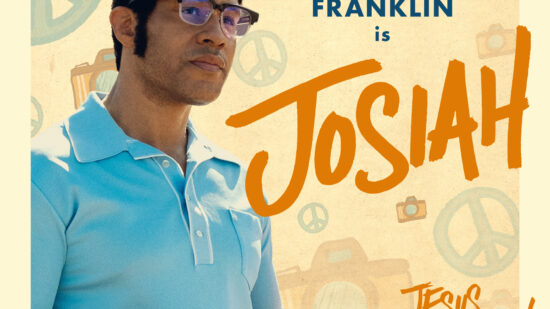By DeWayne Hamby
When the days seem the darkest, there’s still hope. That’s a theme running through the new family drama “Gigi and Nate,” which follows a young man who becomes paralyzed below the waist and must rely on his family, friends, and a capuchin monkey service animal to bring him out of despair.
Although it focuses on Nate’s family, director Nick Hamm says the message of compassion, understanding, and positivity is one that everyone can relate to.
“I hope that people will see a movie offers an incredibly optimistic view of the human soul,” he said. “Because I believe that the majority of people are basically good, and that acts of heroism are very basic and very domestic. They’re not to do with whether you can make somebody invisible, or you can lift a building with your finger. They are that you help someone else in any way, which is the fundamental nature of the way we build our society. And this movie celebrates it.”
Screenwriter David Hudgins also revealed that a key scene, where someone gives up car rental for Nate’s father, played by Jim Belushi, was actually a true incident that happened in the life of the real “Nate,” Ned Sullivan.
“I put a line in the script, ‘Nick, angels come in many forms’,” he said. “I believe there are moments of grace that happened in real life. That’s just an example of a small moment in this film that is grounded and real.”
Another true inspiration is the story of Nate’s paralysis, which differs slightly from Ned’s, but reflects a tragedy in Hudgins’ own family.
“(Nick) brought me this project right after I’d gone through a very trying time with my own son who had gotten meningitis and been in a coma,” he recalled. “We didn’t know if he was going to survive. And we didn’t know if he survived if he was going to be paralyzed.”
Even with slightly different circumstances, the screenwriter believes the theme of hope was still true to the spirit of hope and the inspiration the two were hoping to convey.
“You take someone to the lowest point they can possibly be taken to in their lives, to the point where they’re ready to kill themselves,” he said. “Then the story from there is how Nate comes back from that. And he learns to love life again.”
Hamm also saw as an added benefit a chance to spotlight the highs and lows of people whose lives are not always reflected in mainstream entertainment.
“When you get given the opportunity to celebrate a community like the disabled community, the opportunity to celebrate the absolute triumph of the human spirit over adversity, then you have to, as a filmmaker, take that chance, and offer that up to the general public,” he said.




